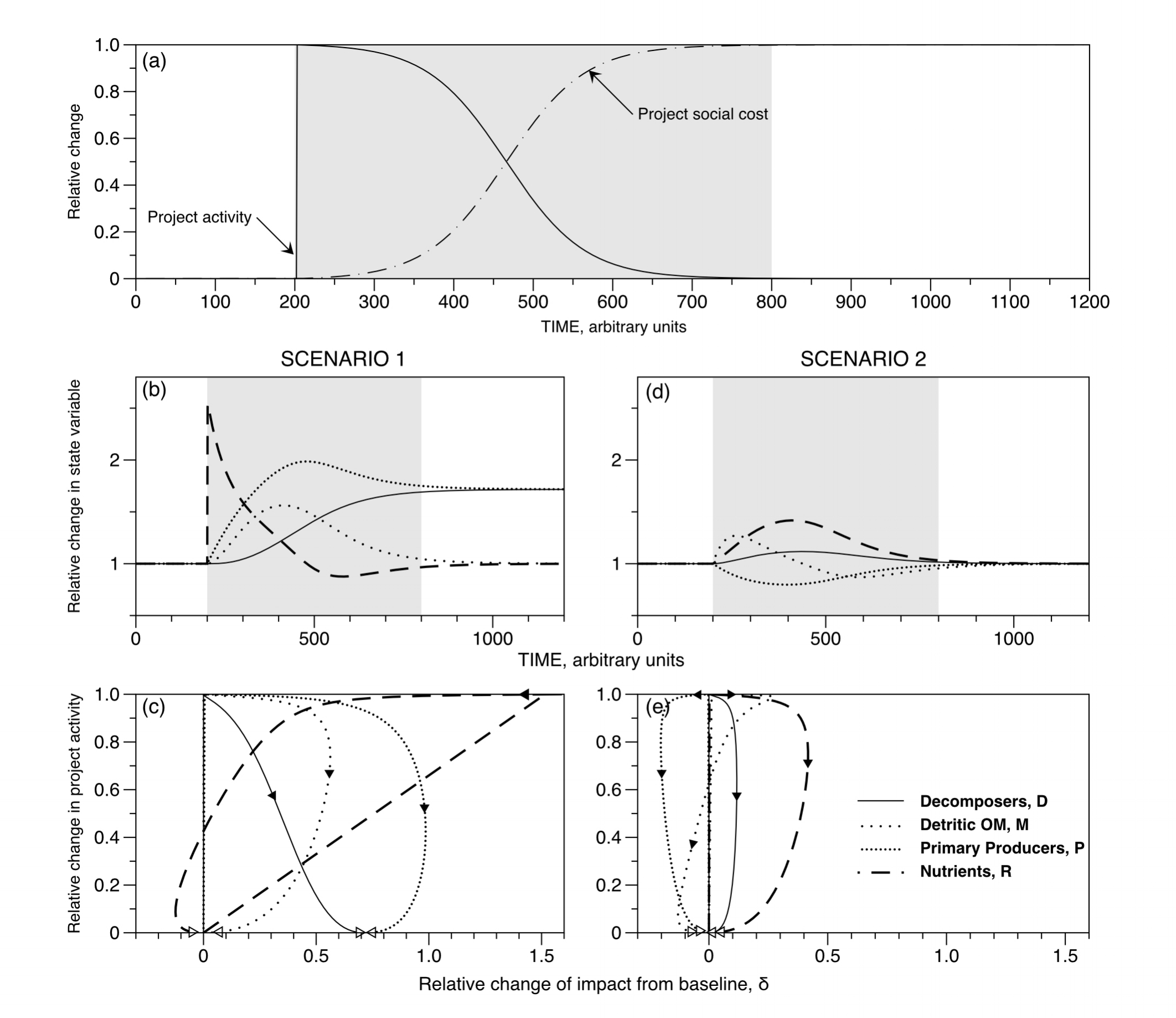We are pleased to announce our first publication on environmental impact assessment. Since the term was invented in the 1970s, EIA has been roundly criticised for relying on untested, qualitative information to describe the impact of development projects. We develop the first quantitative framework for impact assessment in this publication.
What we describe is a twist in the "counterfactual methods" that are common in policy analysis circles. Instead of experimentation, we propose that the behaviour of a reference ecosystem described from theory alone can be a suitable basis of comparison. This has the advantage of providing a low-cost means of evaluating potential impact scenarios before the project begins, using only data available during the scoping step.
It's entitled "A roadmap for a quantitative ecosystem-based environmental impact assessment" and is part of the special issue published after our talk given last June at the "MSEAS2016" conference organized by ICES in Brest. The MSEAS ("Marine Socio-Ecological Systems Symposium") conference aimed to encourage scientific exchanges between social scientists, economists, ecologists and fisheries specialists.
System-based EIA reveals that a project's impact is dynamic
Drivers of change implemented within a socio-economic ecological system show that project activities may stop when ecosystems become degraded, but the system does not necessarily return to a pre-impact state (Figure 3. Coston-Guarini et al. 2017). This has important consequences for how environmental impact is determined and monitored.
ABSTRACT
"A new roadmap for quantitative methodologies of Environmental Impact Assessment (EIA) is proposed, using an ecosystem-based approach. EIA recommendations are currently based on case-by-case rankings, distant from statistical methodologies, and ecological ideas that lack proof of generality or predictive capacities. These qualitative approaches ignore process dynamics, scales of variations and interdependencies and are unable to address societal demands to link socio-economic and ecological processes (e.g. population dynamics). We propose to re-focus EIA around the systemic formulation of interactions between organisms (organized in populations and communities) and their environments but inserted within a strict statistical framework. A systemic formulation allows scenarios to be built that simulate impacts on chosen receptors. To illustrate the approach, we design a minimum ecosystem model that demonstrates nontrivial effects and complex responses to environmental changes and validated with case study. We suggest that an Ecosystem-Based EIA—in which the socio-economic system is an evolving driver of the ecological one—is more promising than a socio-economic-ecological system where all variables are treated as equal. This refocuses the debate on cause-and-effect, processes, identification of essential portable variables, and allows for quantitative comparisons between projects, which is critical in cumulative effects determinations."
CITATION
J. Coston-Guarini, J.-M. Guarini, Shawn Hinz, Jeff Wilson, L. Chauvaud, 2017. A roadmap for a quantitative ecosystem-based environmental impact assessment, ICES Journal of Marine Science, fsx015, https://doi.org/10.1093/icesjms/fsx015
